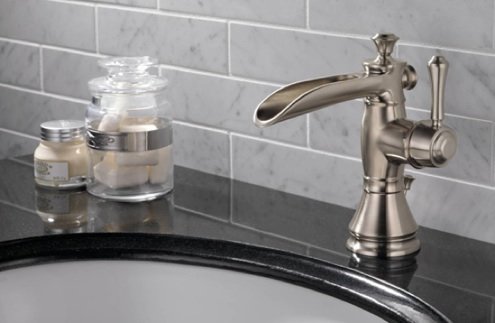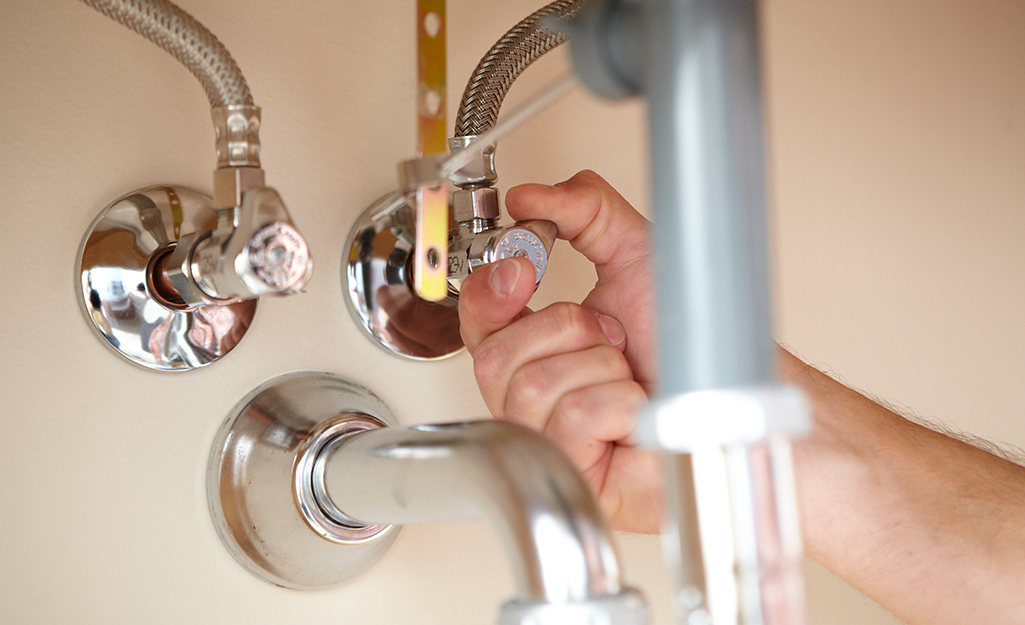Are you on the lookout for information and facts about Why Are My Faucets Dripping (And Can I Fix It Myself)??

Trickling taps may appear like a small hassle, yet their influence exceeds just the nuisance of the sound. From drainage to sustaining unnecessary monetary costs and health risks, ignoring a trickling faucet can bring about different consequences. In this short article, we'll look into why it's critical to address this typical house issue promptly and efficiently.
Waste of Water
Environmental Effect
Dripping taps add considerably to water wastage. According to the Epa (EPA), a single tap leaking at one drip per second can squander more than 3,000 gallons of water annually. This not only stress water sources but additionally influences ecological communities and wild animals based on them.
Step-by-Step Overview to Repairing a Dripping Tap
Devices Required
Prior to attempting to repair a trickling faucet, gather the essential devices, including a flexible wrench, screwdrivers, substitute parts (such as washers or cartridges), and plumber's tape.
Usual Tap Issues and Their Solutions
Determine the type of faucet and the certain issue creating the drip. Typical troubles consist of damaged washing machines, rusty valve seats, or faulty O-rings. Describe manufacturer guidelines or on-line tutorials for step-by-step advice on fixings.
Financial Expenses
Increased Water Expenses
Past the ecological influence, trickling faucets can blow up water expenses significantly. The accumulated wastefulness in time equates into greater energy costs, which can have been avoided with prompt repairs.
Prospective Home Damages
Furthermore, long term leaking can lead to damage to fixtures and surface areas bordering the faucet. Water accumulation can trigger discoloration, deterioration, and also structural issues if left neglected, causing additional repair service costs.
Wellness Issues
Mold And Mildew and Mildew Growth
The consistent visibility of dampness from a trickling faucet creates a perfect environment for mold and mold development. These fungis not only compromise interior air quality yet likewise pose wellness risks, specifically for people with breathing conditions or allergic reactions.
Waterborne Illness
Stationary water in trickling taps can become a breeding ground for microorganisms and various other virus, boosting the danger of waterborne diseases. Impurities such as Legionella germs thrive in stagnant water, possibly resulting in serious illnesses when consumed or breathed in.
Do it yourself vs. Expert Repair
Advantages and disadvantages of Do It Yourself Repair Service
While some might try to repair a trickling tap themselves, DIY repair work include their very own set of challenges. Without proper expertise and devices, DIY attempts can aggravate the concern or cause incomplete repairs, prolonging the trouble.
Benefits of Employing a Professional Plumber
Working with a specialist plumber makes certain that the underlying source of the leaking tap is attended to efficiently. Plumbings possess the expertise and tools to diagnose and fix faucet problems effectively, saving time and decreasing the threat of additional damages.
Environmental Duty
Specific Contribution to Preservation
Taking duty for dealing with dripping faucets aligns with broader efforts towards water conservation and ecological sustainability. Every person's activities collectively make a considerable effect on maintaining precious sources.
Lasting Living Practices
By focusing on punctual repairs and adopting water-saving habits, individuals add to lasting living methods that benefit both present and future generations.
Safety nets
Routine Maintenance Tips
To prevent leaking faucets, carry out routine maintenance such as cleansing aerators, evaluating for leaks, and replacing worn-out parts immediately. In addition, consider setting up water-saving devices or updating to more effective fixtures.
Relevance of Prompt Repair Works
Resolving leaking faucets as soon as they're observed avoids more water waste and potential damages, inevitably conserving both water and money over time.
Influence On Home Value
Understanding of Well-Maintained Residential Or Commercial Property
Preserving a residential property in good condition, consisting of resolving maintenance problems like dripping taps, enhances its regarded worth and worth amongst possible purchasers or occupants.
Influence on Resale Worth
Features with well-maintained plumbing fixtures, consisting of faucets, command higher resale values in the real estate market. Resolving dripping faucets can add to a positive perception throughout residential property inspections and negotiations.
Conclusion
Addressing a dripping faucet surpasses plain ease; it's an essential step toward conserving water, lowering monetary costs, and safeguarding health and wellness and residential or commercial property. Whether with DIY fixings or expert support, acting to repair trickling faucets is a small yet impactful means to promote accountable stewardship of sources and contribute to a healthier, much more sustainable future.
How to Fix a Leaky Faucet: Step-by-Step Repair Guide
A leaky faucet may seem like a simple annoyance, but if it's not fixed promptly, that leak could cost hundreds to potentially thousands. From water damage to mold, mildew, and high water bills, even a tiny leak can be catastrophic if left unattended. Damage like this can even affect the overall value of your home, so it's important to take the right approach for leaky faucet repair. You may need the help of a plumber in some cases, but we've got a few tips you can try on how to fix a leaky faucet before calling the pros.
Four Faucet Types
When you're learning how to fix a leaky faucet, the first step is knowing what kind of faucet you're working with! There are four common types.
Cartridge Faucets
Cartridge faucets come in one- or two-handled varieties. In one-handled cartridge faucets, hot and cold water combines in a single cartridge. In the two-handled versions, hot and cold water are controlled separately and mixed in the faucet.
Ball Faucets
Ball faucets have a single lever you push up and down to adjust the pressure and rotate to change the temperature. A slotted metal ball controls the amount of water allowed into the spout.
Compression Washer Faucets
They're the oldest type of faucet, but they're still used in many homes — especially older ones. Compression faucets have two separate handles that, when turned, raise or lower the washer that seals a water valve. This valve stops water from flowing through the faucet when it is turned off.
Disc Faucets
Disc faucets rarely need to be repaired due to their maintenance-free design. The water flow is controlled by two discs — the upper one raises and lowers against a fixed lower disc, creating a watertight seal. If your disc faucet starts leaking, you may need to replace the seals or clean residue buildup from the inlets.
Fixing a Leaky Faucet
Step 1: Turn Off the Water
Whether you're learning how to fix a leaky bathtub faucet or how to fix a leaky kitchen faucet, always turn off the water supply to your working area when you're fixing a leak. The last thing you want is a flood added to your list of things to fix.
Look for the shutoff valves below your sink or around the tub and turn them clockwise to stop the water flow. If your faucet doesn't have shutoff valves, you may need to turn off the water for the whole house. Check to make sure it's off by turning the faucet on. If nothing comes out, you're ready to start the repair.
Step 2: Take Apart the Faucet
How you disassemble your faucet depends on the type of fixture you have. You can use a flathead screwdriver to remove the caps on top of the handle or handles for cartridge and compression faucets. Inside, you should see handle screws. Unscrew these with a screwdriver to remove the handle.
Disc- and ball-style faucets will typically have an inlet screw near the handle, and removing that will reveal the interior of the faucet.
Detach the Valve Stem
For cartridge- and compression-style faucets, you'll see the inner valve stem or cartridge once you remove the faucet handles. If you have a compression faucet, unscrew the brass valve stem. If you have a cartridge faucet, pull out the cartridge. If your cartridge has been in place for a while, it may require some tools or extra force to remove it due to mineral deposits.
Examine and Replace Parts
Once you've removed the parts, check them out to confirm what needs to be replaced. You may see corroded rubber washers, O-rings, stems, or cartridges. On a ball-style faucet, check the seats and springs for damage.
If you need to repair a leaky disc faucet, check the inlet and seals on the lower disc.
Once you determine what parts must be replaced, visit your local hardware store. Bring the damaged parts with you to ensure you can purchase the correct components to replace them.
Clean Valves and Faucet Cavity
If you've removed a stem or cartridge, you may notice mineral buildup in the faucet's threads. Use white vinegar to clean the valve seat by soaking it for a few minutes, then scrub it away with a soft toothbrush and rinse with warm water. You can also clean the interior of the faucet in the same way.
Reassemble the Faucet
Once your faucet is cleaned and the required parts have been replaced, it's time to reassemble it. Put the pieces back together and slowly turn the water supply back on. Doing this slowly is crucial because too much initial water pressure can damage the new hardware you've just installed.
https://homewarranty.firstam.com/blog/how-to-fix-leaky-faucet

I discovered that blog posting about while doing a lookup on the search engines. Sharing is caring. You never know, you might be doing someone a favor. Thanks for being here. Kindly pay a visit to our site back soon.